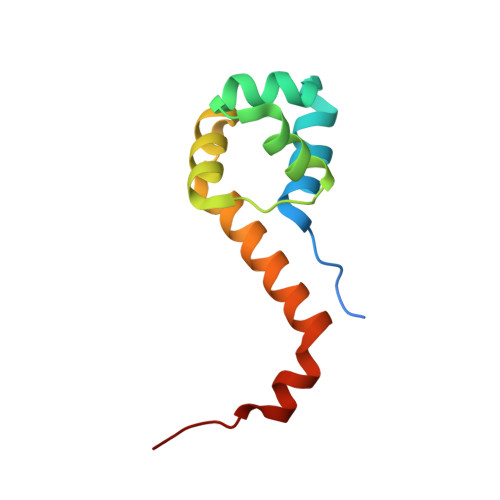A dual role in regulation and toxicity for the disordered N-terminus of the toxin GraT.
Talavera, A., Tamman, H., Ainelo, A., Konijnenberg, A., Hadzi, S., Sobott, F., Garcia-Pino, A., Horak, R., Loris, R.(2019) Nat Commun 10: 972-972
- PubMed: 30814507
- DOI: https://doi.org/10.1038/s41467-019-08865-z
- Primary Citation of Related Structures:
6F8H, 6F8S, 6FIX - PubMed Abstract:
Bacterial toxin-antitoxin (TA) modules are tightly regulated to maintain growth in favorable conditions or growth arrest during stress. A typical regulatory strategy involves the antitoxin binding and repressing its own promoter while the toxin often acts as a co-repressor. Here we show that Pseudomonas putida graTA-encoded antitoxin GraA and toxin GraT differ from other TA proteins in the sense that not the antitoxin but the toxin possesses a flexible region. GraA auto-represses the graTA promoter: two GraA dimers bind cooperatively at opposite sides of the operator sequence. Contrary to other TA modules, GraT is a de-repressor of the graTA promoter as its N-terminal disordered segment prevents the binding of the GraT 2 A 2 complex to the operator. Removal of this region restores operator binding and abrogates Gr aT toxicity. GraTA represents a TA module where a flexible region in the toxin rather than in the antitoxin controls operon expression and toxin activity.
Organizational Affiliation:
Structural Biology Brussels, Department of Biotechnology, Vrije Universiteit Brussel, B-1050, Brussel, Belgium. atalaver@ulb.ac.be.














